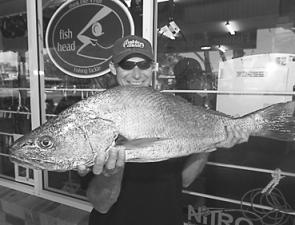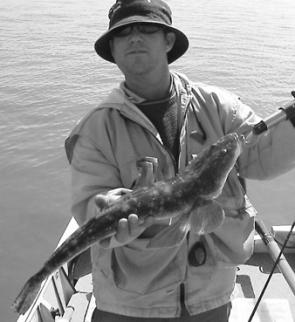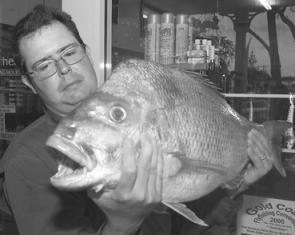October is a time of change in Moreton Bay as mixed warm and cool weather brings a variety of water temperatures to the bay.
After a period of hot days with northerly winds, the shallow sand flat areas and rock bars will heat up. This fires up species such as mangrove jack and estuary cod among the rocks. Tuna and mackerel will be hunting on the sand bank edges further up the bay. Flathead in the southern bay will also take advantage of the warmer sand flats by laying in ambush for baitfish in the shallows. Conversely a few days of cooler weather and southerly winds can make water temperatures plummet in the shallows, pushing much of the action back into the deeper water. So it’s worth paying attention to the weather patterns when planning a trip this month, as it can strongly affect which species will be biting where.
Flathead are right at the top of the list as a target species this month. They are in good numbers around the shoreline and sand bank edges right through the southern bay islands area. From October onwards they will start to migrate back up the rivers after their winter spawning run and will disperse throughout the rivers and bay region. Drifting the edges of sand and mud banks with the falling tide with baits like mullet fillets, whitebait, and baby blue pillies on 1/0–4/0 sized hooks is a great way to spend a few hours. If you are catching your own bait, then poddy mullet and herring make great livebait.
When baitfishing from the shore, make sure you move the bait along a couple of metres every minute or so and fan your casts out to cover as much ground as possible. Flathead don’t travel very far, preferring to sit in one spot and ambush their prey so it is important to get the bait to them rather than sit and wait for them to come to you. Trolling is another great way to catch flathead. There are some great little divers around such as Lively Lures Micro Mullet and 2.5” Mad Mullets. My favourite is the River2Sea Suspend Minnow. Just make sure you are going as slow as possible and the lures are close to the bottom and occasionally hitting the bottom as you follow the depth contours along the drop-off edges.
In August, the jewfish season was in full swing with a number of good 8-15kg fish being caught. Slow hopping soft plastics has been the gun technique lately, accounting for a number of fish in the Seaway, Jumpinpin, and amongst the southern bay islands. Paddle-tail plastics such as Ecogear Grass Minnows and Powershads work well, as do large stickbaits such as Gulp Jerkshads, 6” Assassins and Zoom Superflukes. The most popular retrieve is a slow lift and drop across the bottom and the best times are around the turn of the tide when the jewies are most active.
Some quality snapper are starting to show up in the bay, the winter season produced many plate-sized fish but few of the really big ones. Hopefully this is the start of a run of larger fish in the Bay. Mud, Peel and St Helena islands have all produced well but some of the deeper holes around the bottom of Macleay Island have been holding surprisingly large fish.
As soon as the warmer weather comes in many people’s thoughts turn to pelagics such as mackerel and tuna. Smaller longtails to 6kg have started to show up in the bay and school mackerel mixed with a few larger spotties have also made an appearance. The top of Peel Island, Rous and Rainbow channels have been the best bet for finding these speedsters. They are mostly feeding on quite small baitfish so keep lures and flies small to ‘match the hatch’.
Until next month, tight lines, or for more information on the southern Moreton Bay area, come and see me at Fish Head (Cnr Broadwater Tce and Stradbroke St, Redland Bay, www.fishhead.com.au) or call us on (07) 3206 7999.
Reads: 1379
Mick Wall with a 9.2kg jewfish that snaffled a Gulp 2” Shrimp intended for a flathead.

Flathead like this are a prime target in October. This one fell to a paddle tailed soft plastic.

Steven Waitte caught this trophy snapper in the middle of the day on a Zoom Superfluke Jr.




